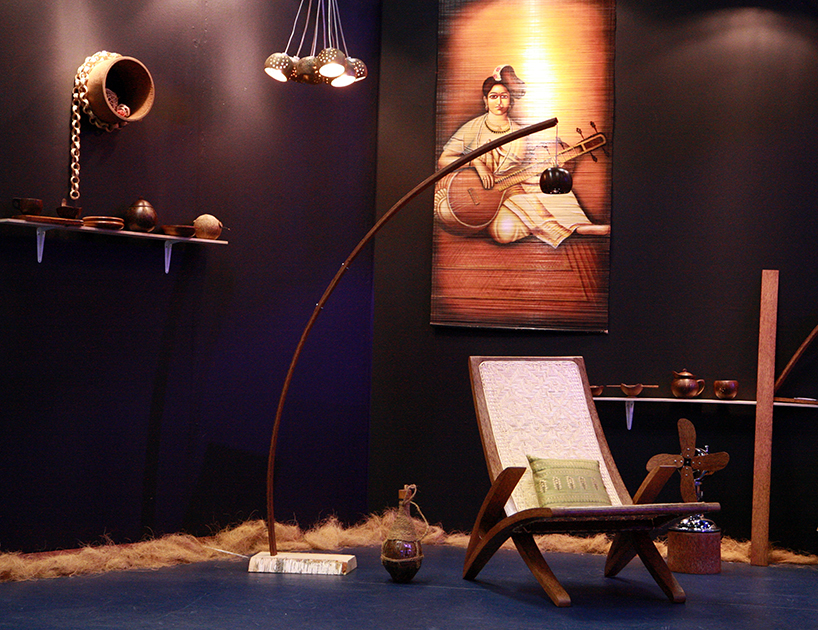
the coco project by biju nair from sweden
designer's own words:
The Coco design project is a result of some exhaustive research and development endevours in exploration of coconut timber as not only a sustainable alternative to hard wood but also strives to popularise the nobility of the Coconut tree as an "absolute tree".
In the so called God’s own country of Kerala, the coconut tree which is an essay in itself enjoys a status more than an ordinary tree. It is a heavenly one. Not an event passes by without the presiding holy coconut. And, if you are one living there, chances are your whole existence depends directly rather than indirectly on coconut tree products. Usually kick-starting the day off with a tender coconut water imbibition, coconut in various forms is a part and literally parcel of a keralite's staple diet; boat jetties and provisional bridges constructed out of coconut trunks, coir, matresses, cushions etc out of the husk, plaited coconut fronds in shelter and enclosure formations, needles as brooms and improvised tooth picks, tender leaves fashioned to form refreshing decorative motifs, timber as fire wood to a multitude of temporary structure purposes. The list is endless. Legends are aplenty how family disputes and turf wars have erupted over coconut resources possession; after all it is white gold. Personally for me, my childhood would have been a lot less colourful without the coconut trees. A coconut tree is a vibrant fairground of creativity for any child in Kerala; we fashion a range of toys and whistles out of fallen babynuts which would put a toy designer to shame. Coconut harvest days are usually fun filled with children becoming worker ants ferring coconuts one by one or several at a time depending on how big ones palms are. This emotional relationship that one gradually builds with the coconut tree takes an all new heady dimension when as a grown up, stifling all the stench, you acquire a taste for and indulge in toddy which is the most organic and side-effect free alcoholic beverage known to mankind (certainly to a Mallu). Plus if you go by the lore, it is healthy and promotes longevity of life if consumed in proper ways.
With so many credits in its kitty, I felt that the coconut tree deserves appreciation for its most under used part with least appreciated quality namely the timber. Given the tricky nature of the timber, traditional wood work knowledge of coconut has always remained limited to roofing applications in the form of posts and purlins. Now, anybody who has taken a close look at a cross section of a coconut tree trunk would notice that the timber is denser near the periphery of the trunk and becomes increasingly spongier towards the middle which leaves it with a usable hard wood not more than 5-6 cm thick radially. Therefore, there has always been an inherent challenge in harvesting the ”sound wood” and use it in a clever manner. Being a monocotyledonous plant species, the advantage the coconut tree’s sound wood has is that besides being homogenous, it is incredibly hard (around 600-700 kg/m3) and lot more flexible than the other wood species owing to its high silica content coupled with lack of branches and hence absence of knots. Furthermore the surface boasts of a grain appearance when polished can hardly be paralleled by anything else.
I, during my wood program studies at the Aalto architecture school in Helsinki had my Eureka moment one day when a passing thought brushed by – why not apply the technique the great Alvar Aalto himself had invented which is the glue-lamination to the coconut wood. And so was an idea born. Schematic sketches were made for a chair, a style inspired from when “Kochi” (the vernacular generic name for a recliner) meets the Scandinavian minimalism and terse functionalism facilitated by applied glue-lam construction technique. Followed was a range of ideas from lamps to utensils out of coconut timber each as a manifest in its own right of coconut timber’s versatility and usability and glamour.
Armed with an idea laden scribbling book, a trip was made to Allepey, Kerala to embark upon a trial with the real deal. Banal as it might sound, experimentations started off with due respect for the basic mantra in any successful wood product development which is proper seasoning of the wood which differs from species to species. Mock ups were made and broken testing & studying ergonomics and thresholds of bendability using trial and error methods with no prior experience working with coconut timber. The glue-lam construction technique enabled overcome the restriction of lean sections to form bendable robust forms of practically any desirable dimensions. Product prototypes such as recliner, floor lamp, a table fan and lamp, wall hanging showcase constellation and some holders out of turned wood blocks were developed. Even the coconut shell was not spared; a chandelier and a set of vessels were conjured up from them. The whole array of prototypes was exhibited at the Stockholm Design Fair of 2012.
At present, timber and byproducts from senile (as well as not so senile) coconut trees are mostly used as firewood and other petty purposes which can be elevated to a higher value and status by applying modern design techniques employing latest wood technology. This endeavour of mine albeit modest is an earnest attempt in letting the world know the unexplored potentials and unsung glory of this wonderful ecofriendly sustainable resource called Coco-wood. Hoping truly it will be recogonised and honoured by the IDF too.
P.S: The videos would not load even in MP4 formats .So here are the links to the videos.
http://www.youtube.com/watch?v=9jqcRfvhYg8
http://www.youtube.com/watch?v=BIee1QPTAFM
The Coco-Verandah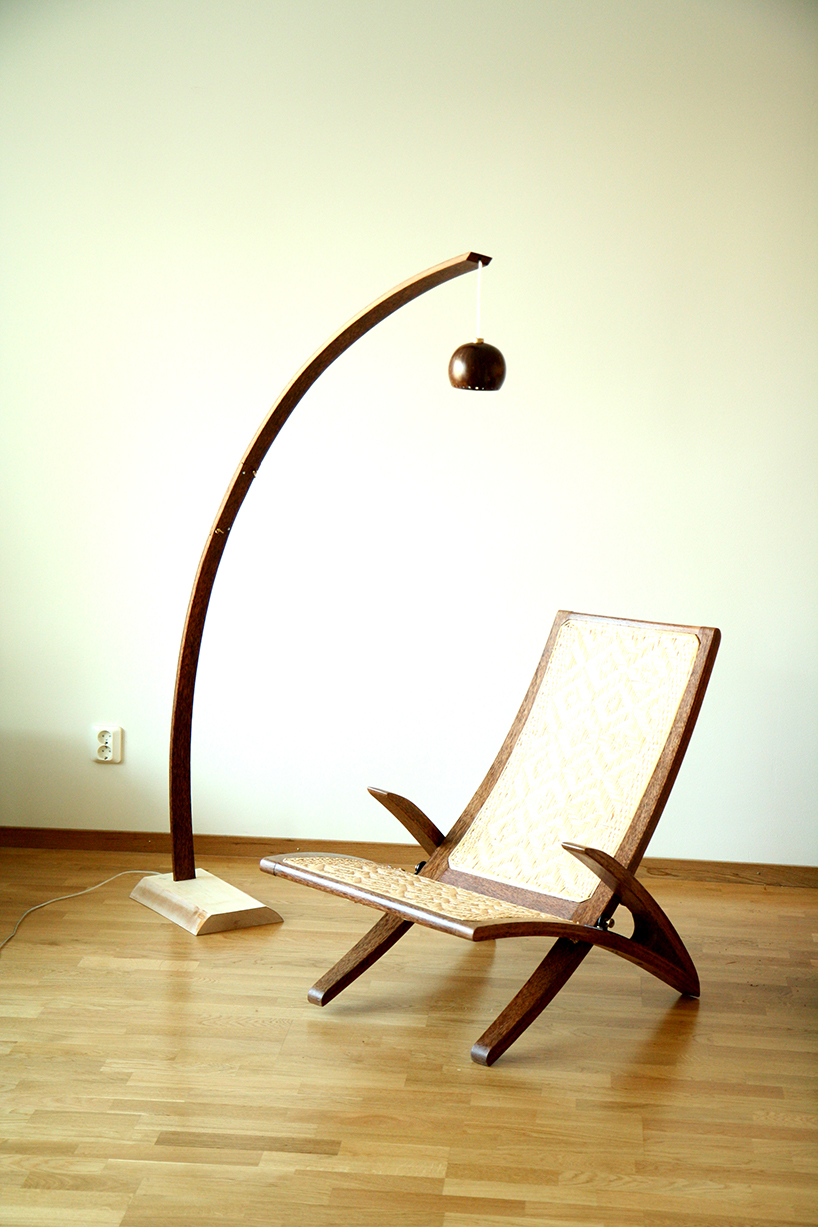 The Kochi chair
The Kochi chair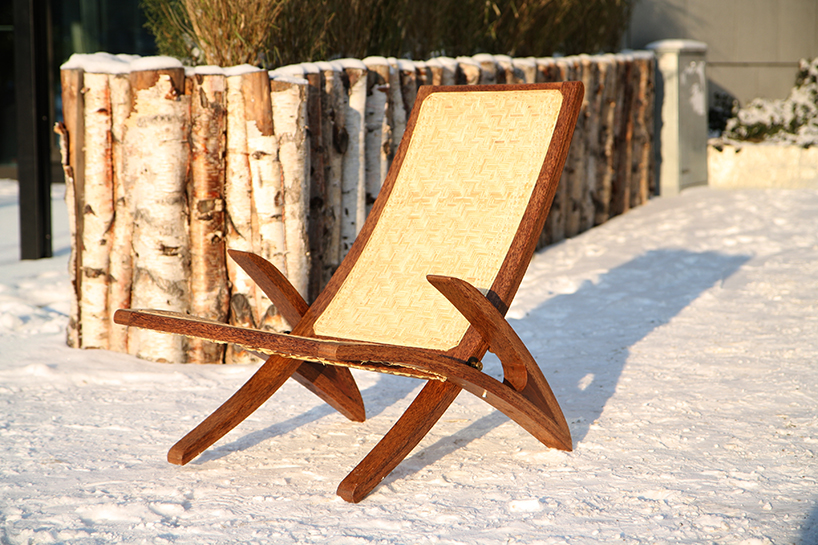 Lounging in snow
Lounging in snow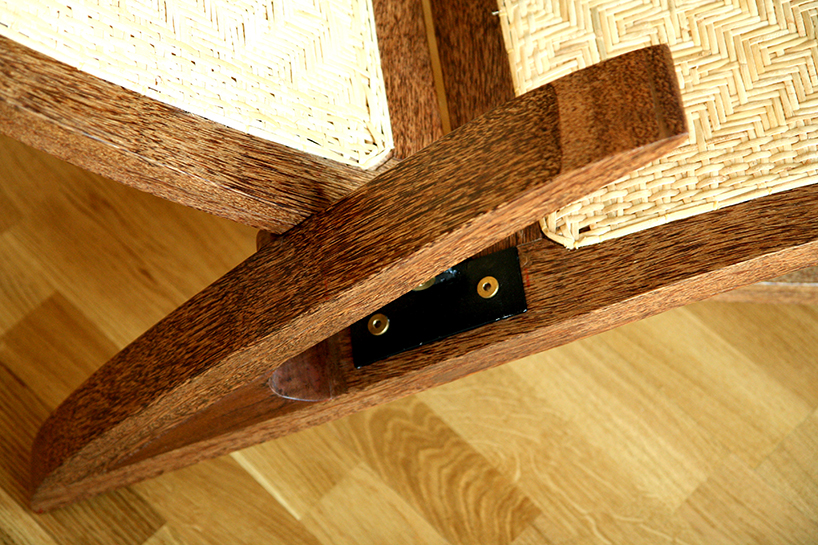 Glue-Laminated Coco-wood detail
Glue-Laminated Coco-wood detail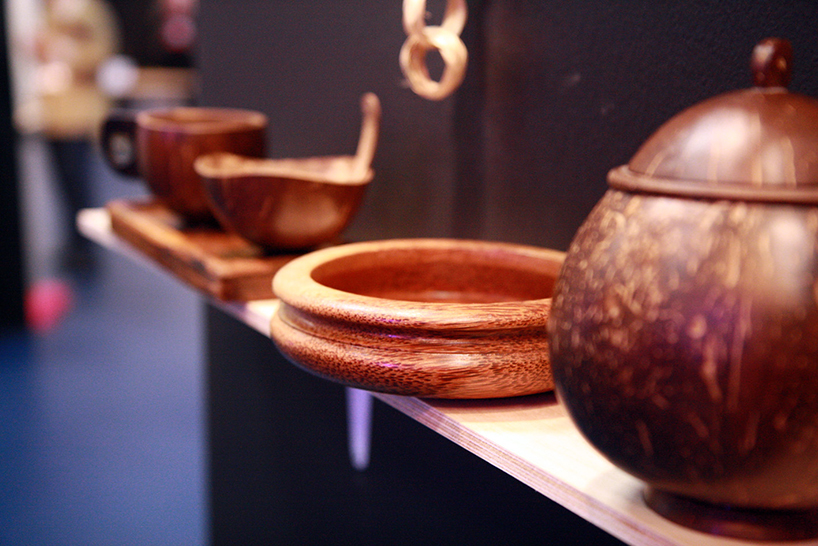 The Coco dining collection
The Coco dining collection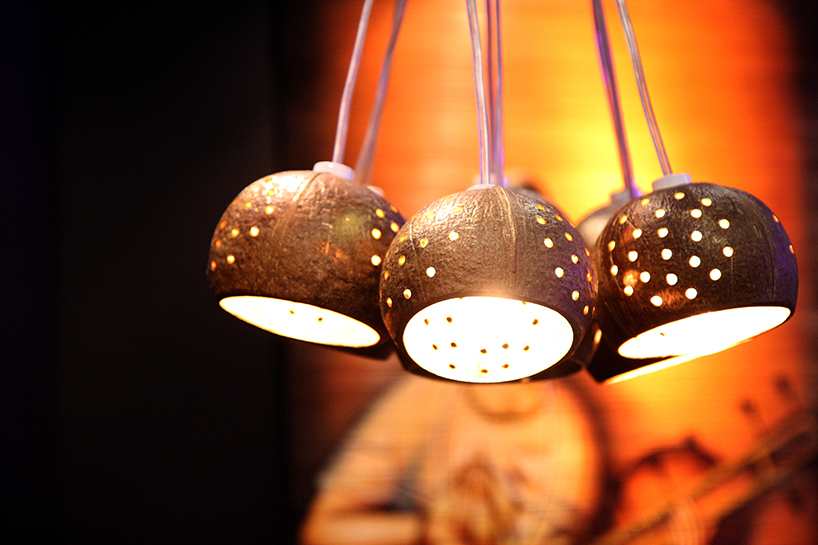 The Coco chandlier
The Coco chandlier